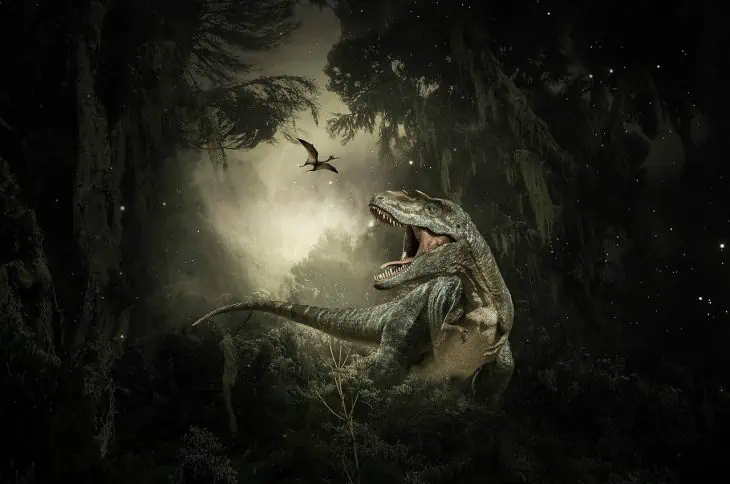
Mention the word dinosaur, and it’s likely that the Tyrannosaurus Rex comes to mind. Also known as “T-Rex”, the Tyrannosaurus Rex is practically the poster child for dinosaurs around the world. And in over 65 million years, no other predator has become as successful as the T-Rex. Learn more about this king of dinosaurs with these 40 Tyrannosaurus Rex facts.
- Scientists estimated that the T-Rex could grow up to a height of 6 meters.
- Their bodies could also grow over 12 meters long.
- A T-Rex’s skull alone could measure over 1 meter long.
- They could also weigh as much as 14 metric tons.
- A T-Rex’s bite could exert up to 35,000 Newtons, compared to a human’s maximum bite force of only 300 Newtons.
- Scientists first found T-Rex’s fossils, specifically teeth, in 1874, at the Arthur Lakes in Colorado.
- Barnum Brown found the first incomplete T-Rex skeleton in 1900.
- He later found a second, also incomplete T-Rex skeleton in 1902.
- WWI, the Great Depression, WWII, and the Korean War, all caused studies into the T-Rex to decline until the 1960s.
- William MacMannis’ discovery of another incomplete T-Rex skeleton in 1967 revived the study of the dinosaur.
- Charles Pillmore discovered the first fossilized T-Rex footprint in 1983.
- Sue Hendrickson discovered the most complete, at around 85%, T-Rex skeleton thus far in 1990, and which scientists named after her.
- Jack Horner discovered 5 T-Rex skeletons in a single site in 2000.
- Phil Manning discovered another fossilized T-Rex footprint in 2007.
- Possible fossilized T-Rex footprints later became discovered in 2016, but remain debated among scientists today.
- Tyrannosaurus Rex literally means Tyrant King of Lizards.
- Scientists now consider the name as inaccurate, as dinosaurs became the ancestors of modern birds.
- Scientists estimate that the T-Rex could travel on average at a walking speed of 5 kph.
- When running, they estimate the T-Rex could reach speeds of up to 27 kph.
- Scientists now think that the T-Rex both actively hunted prey, as well as scavenged the corpses of dead dinosaurs.
Was this page helpful?
Our commitment to delivering trustworthy and engaging content is at the heart of what we do. Each fact on our site is contributed by real users like you, bringing a wealth of diverse insights and information. To ensure the highest standards of accuracy and reliability, our dedicated editors meticulously review each submission. This process guarantees that the facts we share are not only fascinating but also credible. Trust in our commitment to quality and authenticity as you explore and learn with us.


